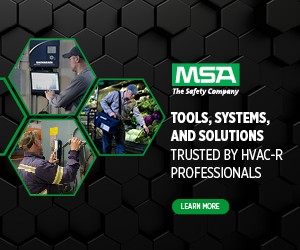Regulatory Impacts of the COVID-19 Pandemic

The U.S. Department of Homeland Security has designated essential businesses and workers needed to continue working to support the nation’s critical infrastructure. Most IIAR members qualify as under the critical infrastructure designation to support the food supply chain. With many companies associated with the industrial refrigeration industry maintaining operations during the pandemic, it is important to understand how government agencies are approaching enforcement.
EPA ENFORCEMENT DISCRETION
On March 26, 2020, the U.S. Environmental Protection Agency published a memo entitled: “COVID-19 Implications for EPA’s Enforcement and Compliance Assurance Program”. The memo sets forth a temporary policy that authorizes discretion in enforcing regulatory requirements where compliance is impacted by COVID-19.
The memo makes it clear that EPA expects all regulated entities to continue to manage and operate their facilities in a manner that is safe and that protects the public and the environment. Facilities should make every effort to comply with their environmental compliance obligations. However, if compliance is not reasonably practicable, facilities with environmental compliance obligations should:
- Act responsibly under the circumstances in order to minimize the effects and duration of any noncompliance caused by COVID-19;
- Identify the specific nature and dates of the noncompliance;
- Identify how COVID-19 was the cause of the noncompliance, and the decisions and actions taken in response, including best efforts to comply and steps taken to come into compliance at the earliest opportunity;
- Return to compliance as soon as possible; and
- Document the information, action, or condition specified in a. through d.
During the pandemic, EPA has stated that it expects to focus its resources largely on situations that may create an acute risk or imminent threat to public health or the environment, to ensure protection against such risks or threats. It is important to note that nothing in this temporary policy relieves any facility from the responsibility to prevent, respond to, or report accidental releases of hazardous chemicals, as required by federal law. The memo is not an indication that EPA intends to exercise enforcement discretion in the wake of such a release.
The EPA policy applies retroactively beginning on March 13, 2020, and will remain in effect until further notice. EPA will assess the continued need for and scope of this temporary policy on a regular basis and will update it if the EPA determines modifications are necessary. EPA will publish a notification at least seven days prior to terminating this temporary policy.
OSHA ENFORCEMENT DISCRETION
On April 16, 2020, the Occupational Safety and Health Administration published a memo entitled: “Discretion in Enforcement when Considering an Employer’s Good Faith Efforts During the Coronavirus Disease 2019 (COVID-19) Pandemic.” The memo states that OSHA understands that some employers may face difficulties complying with OSHA standards due to the ongoing COVID-19 health emer – gency. Widespread business closures, restrictions on travel, limitations on group sizes, facility visitor prohibitions, and stay-at-home or shelter-in-place requirements may limit the availability of employees, consultants, or contrac – tors who normally provide training, auditing, equipment inspections, testing, and other essential safety and industrial hygiene services. Business closures and other restrictions and limitations may also preclude employee participation in training even when trainers are avail – able. The OSHA enforcement discre – tion policy took effect immediately on April 16, 2020, and will remain in effect until further notice.
In exercising enforcement discretion, OSHA will assess an employer’s efforts to comply with standards that require annual or recurring audits, reviews, training, or assessments. Inspectors will evaluate whether the employer made good faith efforts to comply with applicable OSHA standards and, in situations where compliance was not possible, to ensure that employees were not exposed to hazards from tasks, processes, or equipment for which they were not prepared or trained. As part of assessing whether an employer en – gaged in good faith compliance efforts, inspectors will evaluate whether the em – ployer thoroughly explored all options to comply with the applicable standard. Inspectors will also consider any interim alternative protections implemented or provided to protect employees, such as engineering or administrative controls, and whether the employer took steps to reschedule the required annual activity as soon as possible.
In instances where an employer is un – able to comply with OSHA-mandated training, audit, assessment, inspection, or testing requirements because local authorities required the workplace to close, the employer should demonstrate a good faith attempt to meet the appli – cable requirements as soon as possible following the re-opening of the work – place.
Where the employer cannot demon – strate any efforts to comply, a citation may be issued as appropriate under the existing enforcement policy. However, where an employer has made attempts to comply in good faith, OSHA will take such efforts into strong consider – ation in determining whether to cite a violation. Where enforcement discre – tion is warranted, will ensure that suf – ficient documentation (e.g., notes on the efforts the employer made to comply, letters or other documentation showing that providers had closed) is provided in the case file to support the decision.
The OSHA memo includes an Annex with examples where enforcement dis – cretion may apply. Below is an example pertaining to annual Process Safety Management requirements such as Pro – cess Hazard Analysis (PHA) Revalida – tion, Review of Operating Procedures, and Refresher Training:
PSM EXAMPLE
An employer contracts with a consul – tant to conduct process hazard analysis (PHA) revalidations. A PHA revalida – tion for the employer’s ammonia refrig – eration process was due to be completed by April 1, 2020, but because of travel restrictions and shelter-in-place orders, the consultant was unable to fly to the employer’s location. OSHA will not cite the employer for failing to meet the three-year requirement for conduct – ing a PHA revalidation, provided the employer considered alternative options for compliance, implemented interim alternative protective measures, where possible, and shows a good faith effort to reschedule the PHA revalidation as soon as the travel restrictions and shelter-in-place orders are lifted.
IIAR members are strongly encour – aged to review both the EPA and OSHA temporary enforcement discretion policies. While both agencies have recognized the potential challenges to compliance during the pandemic and have issued temporary policies to allow for enforcement discretion, IIAR mem – bers should continue to make good faith efforts to maintain compliance and care – fully document any circumstances with compliance is not possible due to the pandemic. IIAR will alert members to any changes or updates to these policies.















